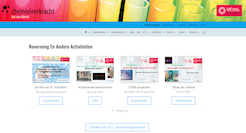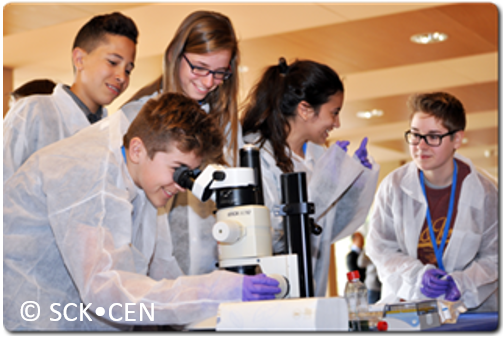Exploiting non-covalent interactions in peptide assemblies for controlled-drug delivery

Promovendus/a: Jolien Bertouille
Promotor(en): Prof. Dr. Steven Ballet, Prof. Dr. Ulrich Hennecke, Prof. Dr. Charlotte Martin
For more than 10 years, peptide-based hydrogels are being investigated in the Research Group of Organic Chemistry at Vrije Universiteit Brussels. Such hydrogels are biological nanomaterials which show high compatibility with human tissues and, hence, they are promising candidates for medical applications including wound healing, tissue engineering and drug delivery.
The hydrogelator with sequence H-FQFQFK-NH2 has been successfully co-formulated with morphine and other painkilling drugs, and in vivo experiments showed an extended drug release up to four days. During this PhD research, the peptide self-assembly and gelation were first studied using high-speed atomic force microscopy, which resulted in new insights in the supramolecular fibrillization process. Next, the potential of side chain diversification was investigated in order to improve the gel strength and stability, and concomitantly the drug release window. Specific attention went to the role of the hydrophobic side chains and their involvement in aromatic interactions. First, the flexibility of the aromatic side chains was analysed by molecular dynamics simulations. The reduced flexibility upon use of the unnatural amino acid phenylglycine instead of phenylalanine, led to an elevated stability of the assemblies.
Next, the aromatic interactions were modified through insertion of different substituents on the phenylalanine residues. The obtained hydrogelators resulted in diverse fibre morphologies which were categorized in three subtypes. Additionally, correlations between the network type and the gel characteristics were found. The side chain modifications delivered hydrogels with significantly improved gel strength and erosion stability. In continuation of this study, the impact of halogenation on the aromatic interactions and gelation was investigated. In parallel to computational studies, a series of halogenated peptides were prepared and mechanically characterized. The interaction energies increased with increasing halogen size, which also led to stronger gels. Finally, the hydrogel was modified with the aim of creating fluorescent materials. For this purpose, novel naphthalimide-based amino acids have been synthesised and were integrated in the peptides. Gels with aggregation-enhanced emission were produced, further expanding the application potential of peptide-based hydrogels in the biomedical field.
In conclusion, new fundamental insights in the peptide fibrillization were obtained and more than 30 new hydrogelators have been designed with tuned non-covalent interactions and ameliorated material properties.
All Dates
- 2025-03-31 17:00
Powered by iCagenda



